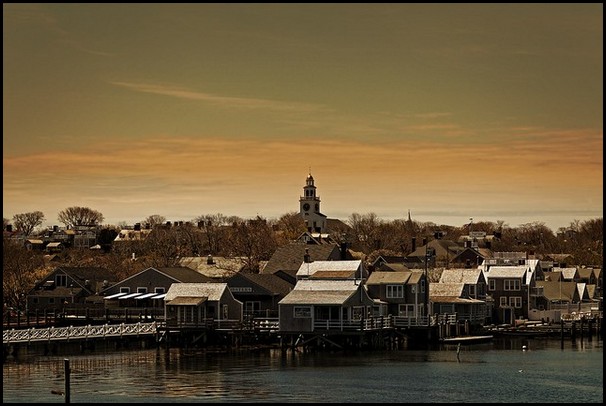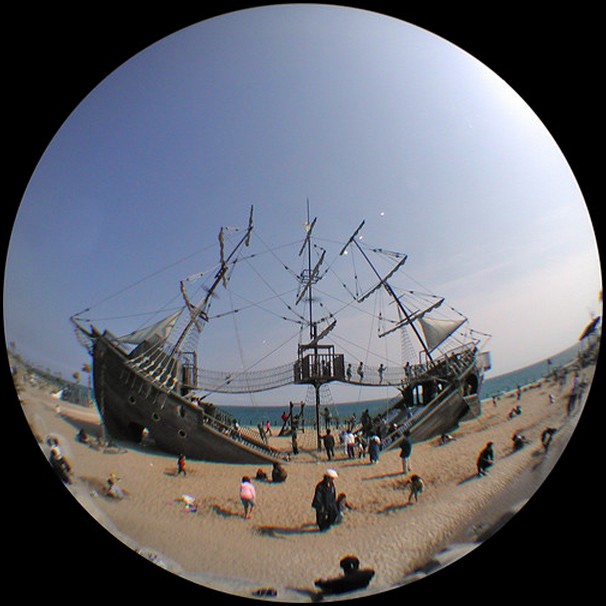
7 Surprising Facts about Nantucket
Even if you have already visited Nantucket, the chances are that this small “Gray Lady” can surprise you with something new next time you decide to spend time there.
Located 30 miles south of Cape Cod and in close proximity to Martha’s Vineyard, Nantucket offers some of the best-preserved historic buildings, a stunning natural habitat, endless beaches, and a unique coastal vibe like no other place.
You can reach Nantucket by plane or take the ferry from Hyannis and several other ports in the area. The first thing to keep in mind is that the island is often unexpectedly covered with heavy fog, which can cause delays in your travel plans. It is a good idea to plan ahead, book one of the beautiful private homes which are offered for rent and prepare your itinerary for your stay.
Here are seven new things to do and facts about Nantucket which may surprise you and which you may want to check out during your next trip to this charming New England Island.

1. Nantucket was one of few jurisdictions that banned automobiles
Did you know that the authorities and the residents of Nantucket voted that automobiles be banned from the island? This temporary ban was in place from 1908 to 1918. But then, repeal by the voters was accepted to allow automobiles back on the island. The main reasons for upturning the ban were concerns about the ability to provide fast emergency medical and firefighting services on the island and the faster delivery of packages and mail by the local postal service.
Today, even though cars are not banned from entering Nantucket, taking your vehicle with you via ferry can be quite expensive.
The authorities have built over 30 miles of bike paths connecting most areas of the island to promote a more eco-friendly approach to transportation and reduce the heavy summer traffic. The first path of this type was built in 1898 and connected Madaket Road to the North Shore.
There are also affordable shuttle buses, walking trails, and rental vehicles, which you can use when you are in Nantucket.
2. There are “sheep storms”
The so-called sheep storms on the island were those periods from June and July when the heavy fog would cover the moors of Nantucket. This term was used back in the 1800s and referred to the fact that the heavy fogs caused the drenching of the coats of the sheep in the moors. Then, the hot weather caused the coats to dry, and it was time for the shearing of the sheep. This turned into an annual tradition of the Sheep Shearing festivals in Nantucket.

3. Nantucket was part of the phrenology craze
Phrenology was a temporary craze in the early and mid-1800s. It claimed that the person’s character could be predicted and read via the examination of their skull.
In the 1830s, a Phrenology Society was established in Nantucket, and there were lectures held in the Atheneum, including models of different skulls and heads with the labeled maps of the different characteristics of the individual. Some of these areas included ideality, amativeness, combativeness, approbativeness, secretiveness, and more.
There was special interest in the skills of the aboriginal people and of the famous people who had resided on the island.
Pretty soon after that, in the mid-1930s, an open letter that debunked this entire theory of phrenology was issued in the Nantucket Inquirer. It was signed “M,” which, according to historians, stands for either Maria Mitchell or her father, William Mitchell. Maria Mitchell was a librarian, educator, and naturalist and was the first female astronomer in the USA.
4. Deer swim there
Deer are a common sight in Nantucket, especially in its vast natural wildlife refuges and conservation habitats. The most common type is the whitetail deer.
But the question which many ask is how did the deer reach the island of Nantucket?
Historical data shows that deer, notoriously strong swimmers, may have swum to the island. It is a fact that the whitetail deer can swim at 10-13 miles an hour.
In 1922, the crew of a fishing boat named Antonia spotted and rescued a male buck swimming in the waters of the Nantucket Sound in between Cape Cod and Nantucket. The fishermen released the animal on the shore. In 1936 three females were brought to the island too.
Today, the deer population in Nantucket is one of the highest in Massachusetts. This is causing a harmful impact on the local vegetation and forests and is one of the reasons why deer hunting is very popular in Nantucket.
5. There is an annual Fourth of July water fight tradition
While people around the USA traditionally celebrate the 4th of July, enjoying barbecues, parades, and watching the fireworks, there is one different tradition in Nantucket.
On every 4th of July, the local firefighters gather on Main Street in the town of Nantucket, and an epic water fight is held among them, the fire trucks and the spectators with buckets and water guns.

6. From pirate ships to whaling vessels – there are over 700 shipwrecks
In the 19th century, Nantucket was known as “the graveyard of the Atlantic” due to the hundreds of shipwrecks that happened around it.
Since the navigation during those years was not advanced, and because of the unpredictable weather, dangerous shoals, and fogs that often covered the island, more than 700 ships were known to have sunk near Nantucket.
The local Shipwreck and Lifesaving Museum includes exhibits of artifacts from these ships, records and models of the vessels, and the stories of the many local heroes who risked their own lives to save those ships and their crews.
So, remember to add this “rare gem of a museum” to your schedule next time you go to Nantucket.
7. Every autumn, Nantucket is painted scarlet
Cranberries have been cultivated in Nantucket since the Native American aboriginal population inhabited it.
Today, cranberry farming continues to be a leading agricultural business on the island.
In autumn, they turn scarlet and are flooded, which is the easiest way to harvest the ripe cranberries.
For more than 160 years, there has been a Cranberry Harvest Festival on the island.
You can also visit the Milestone Bog, which is the largest continuous bog on the planet.
==================================











 Hi! I'm Lash, an American nomadic world traveler who's been traveling solo since 1998. I’m passionate about traveling the world nomadically and then sharing it all with you. I hope to inspire you to travel the world, to entertain you with tales from the road, and to help you reach your travel dreams. Welcome!
Hi! I'm Lash, an American nomadic world traveler who's been traveling solo since 1998. I’m passionate about traveling the world nomadically and then sharing it all with you. I hope to inspire you to travel the world, to entertain you with tales from the road, and to help you reach your travel dreams. Welcome! 



